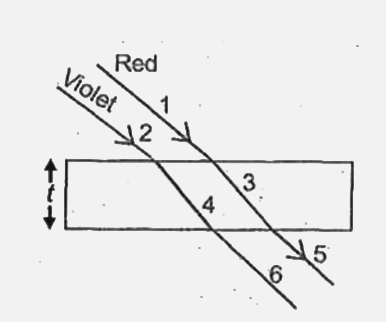Violet colour appear in glass when we add-
Cr3+
Mn4+
I2
K+
The correct Answer is:A
To solve the question regarding the appearance of violet color in glass when certain ions are added, we can follow these steps:
Step 1: Understand the Context
We need to determine which ion, when added to glass, produces a violet color. The options given are chromium ion (Cr³⁺), manganese ion (Mn⁴⁺), iodine (I₂), and potassium ion (K⁺).
Hint: Consider the properties of transition metal ions and their ability to produce colors.
Step 2: Identify the Ions
Among the options:
- Cr³⁺ (Chromium ion): Known to produce a violet color in glass.
- Mn⁴⁺ (Manganese ion): Typically produces a different color, often yellow or brown.
- I₂ (Iodine): Generally does not impart a violet color.
- K⁺ (Potassium ion): Usually does not contribute to color in glass.
Hint: Recall the common colors associated with transition metal ions.
Step 3: Understand d-d Transitions
Transition metal ions can undergo d-d transitions, where electrons are promoted from one d-orbital to another. The energy difference between these orbitals corresponds to specific wavelengths of visible light, which gives rise to the observed color.
Hint: Think about how the color observed is related to the color absorbed.
Step 4: Determine the Color Produced
When Cr³⁺ is added to glass, it absorbs certain wavelengths of light and reflects/transmits others. The color that is transmitted or reflected is complementary to the color absorbed. In the case of Cr³⁺, it absorbs light in the yellow-green region, resulting in the appearance of violet.
Hint: Remember that the observed color is the complementary color of the absorbed light.
Step 5: Conclusion
Based on the analysis, the correct answer to the question is that violet color appears in glass when chromium ion (Cr³⁺) is added.
Final Answer: The violet color appears in glass when we add Cr³⁺ (Chromium ion).
We need to determine which ion, when added to glass, produces a violet color. The options given are chromium ion (Cr³⁺), manganese ion (Mn⁴⁺), iodine (I₂), and potassium ion (K⁺).
Among the options:
- Cr³⁺ (Chromium ion): Known to produce a violet color in glass.
- Mn⁴⁺ (Manganese ion): Typically produces a different color, often yellow or brown.
- I₂ (Iodine): Generally does not impart a violet color.
- K⁺ (Potassium ion): Usually does not contribute to color in glass.
Transition metal ions can undergo d-d transitions, where electrons are promoted from one d-orbital to another. The energy difference between these orbitals corresponds to specific wavelengths of visible light, which gives rise to the observed color.
When Cr³⁺ is added to glass, it absorbs certain wavelengths of light and reflects/transmits others. The color that is transmitted or reflected is complementary to the color absorbed. In the case of Cr³⁺, it absorbs light in the yellow-green region, resulting in the appearance of violet.
Based on the analysis, the correct answer to the question is that violet color appears in glass when chromium ion (Cr³⁺) is added.
Similar Questions
When chlorine water is added to an aqueous solution of sodium iodide in the presence of chloroform, a violet colouration is obtained. On adding more of chlorine water and vigorous shakinh, the violet colour disappear. This shows the conversion of …….. into .......
View SolutionThe deviation caused for red, yellow and violet colours for crown glass prism are 2.84∘,3.28∘ and 3.72∘ respectively. The dispersive power of prism material is:
View Solution
Knowledge Check
Freshly prepared solution of sodium nitroprusside is added to the sodium extract. Appearance of a deep violet colour indicates the presence of
AnitrogenBsulphurCboth nitrogenn and sulphurDhalogen
Yellow colour appears when concentrated nitric acid is left standing in an ordinary glass bottle.
View SolutionTwo parallel rays of red and violet colour passed through a glass slab, which of the following is correct?

View SolutionAccount for the yellow colour that appears in concentrated nitric acid when left standing in ordinary glass bottle.
View SolutionA violet colour is obtained on adding Cl2 water in solution of potassium halide in presence of chloroform and on adding excess of Cl2 water, violet colour disappears and colourless solution appears. The test shows the presence of
View SolutionWhat is quick lime? What happens when we add water to it?
View SolutionWhen CS2 layer containing both Br2 and I2 is shaken with excess of Cl2 water, the violet colour due to I2 disappears and appereance of pale yellow colour is due to the formation of :
View SolutionIn Primrose despite the presence of dominant allele of red flower colour, the flowers appear white when
View Solution
